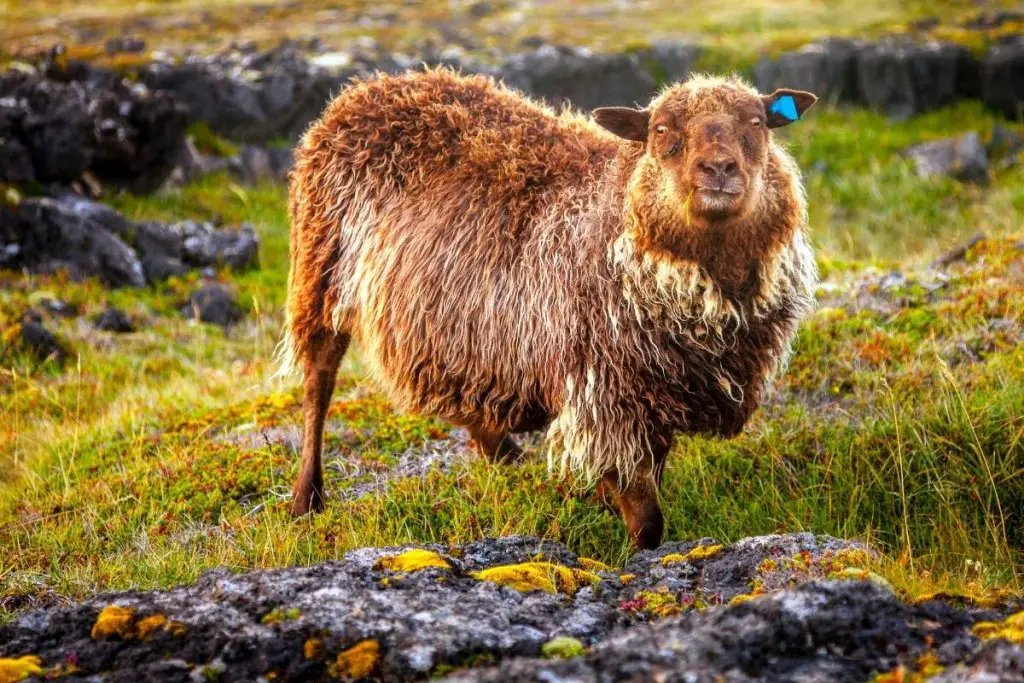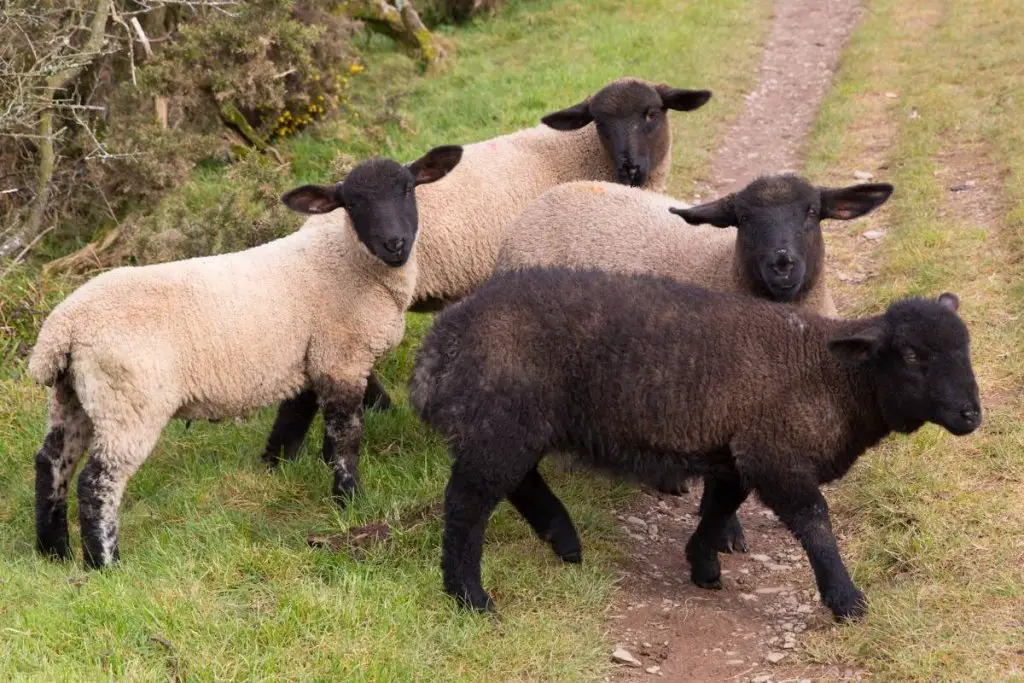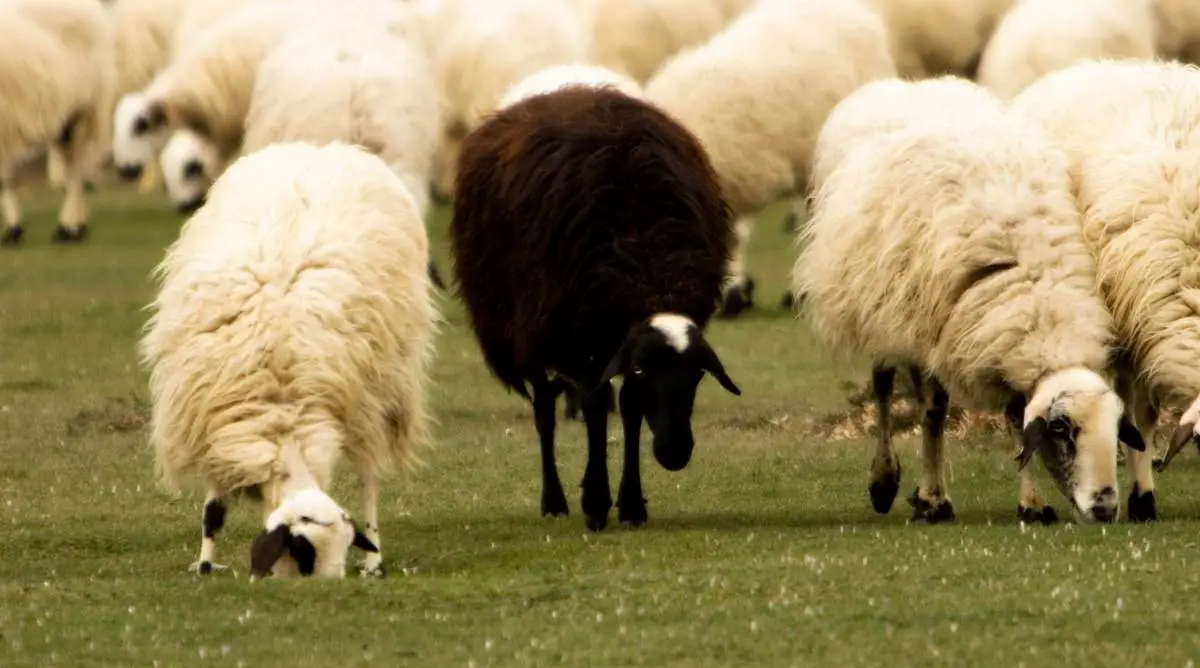Although modern sheep breeds are predominantly white and solid black, sheep colors are not limited to these two. There are at least six primary sheep colors, ranging from brown to red to cream to gray. Some sheep have multiple colors (a white body and black head, for example). Others, like the Icelandic and Shetland breeds, produce color patterns.
Table of Contents
Are all sheep white?
Not all sheep are white. Sheep colors range from dark, solid black to ginger-like moorit (the Icelandic word for “as red as moor”).
Trends are leaning more towards white wool-producing breeds. In turn, this encourages ranchers and livestock owners to raise white sheep, which ensures consistently dyeable wool for garment and yarn manufacture.
How many colors of sheep are there?

While it is difficult to identify all the different colors in all breeds of sheep, there are at least six typical colors of sheep:
- White
- Black
- Gray
- Cream
- Red
- Brown
Many sheep are combinations of the above (white body plus black head, for example).
Why are some sheep different colors?
Different sheep colors come from breeding practices and genetics. For instance, a Dorper ewe from North America that is crossbred with a piebald sheep like the Jacob ram can produce offspring with black and white pigment.
Sheep such as Shetland sheep can have dozens of color combinations.
How do genetics influence the colors of sheep?

Identifying the dominant genes is crucial to the resulting offspring of a ewe. As a rule of thumb, a white ewe mated with a white ram will result in a white lamb.
Similarly, a white ewe mated with a ram black sheep will still produce a lamb with white wool. This is because the black sheep gene is recessive.
However, if two sheep with dark colored fleece are mated, there’s a high chance the lamb’s wool will also have dark colors.
What is the rarest color of sheep?
The black sheep remains a rare sighting due to its high improbability and recessive black gene (about one in four born lambs). Sheep colors like red or brown also tend to be just as elusive wool shades.
Most lambs born with reddish and rust-colored wool eventually outgrow the striking shade, eventually fading into a more tan or cream hue.
What are the benefits of white wool?
Since wool is a commodity and white wool is easier to use for commercial purposes, farmers generally prefer white wool sheep over the various darker-hued breeds.
White sheep produce white wool used for yarn and fabric production.
Dyes can easily penetrate white wool fibers. In turn, they can transform the wool into a range of colors that sheep with darker-hued wool cannot readily produce.
Do black lambs turn into white sheep?
Lambs that are born with black wool may outgrow their original wool or coat color.
For example, Suffolk and Romanov lambs are mostly born black. Yet as they reach maturity, their fleece lightens into a soft silver grey.
Are there sheep with red wool?
California Red sheep are an example of a breed with reddish-brown wool. The lambs have especially reddish wool. However, as they grow and develop into ewes and rams, their wool color can fade into beige or oatmeal hues.
California Red rams can also develop a red mane towards adulthood. California Red sheep have become a favorite among spinners and weavers for their remarkable wool color.

